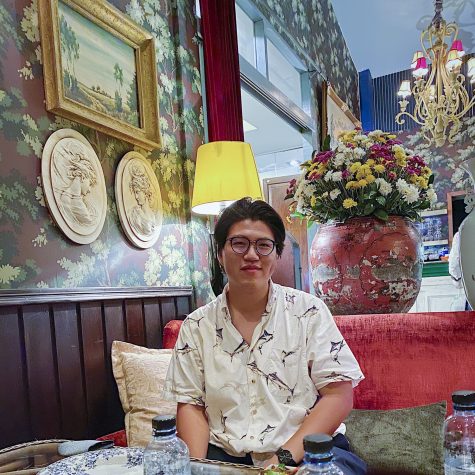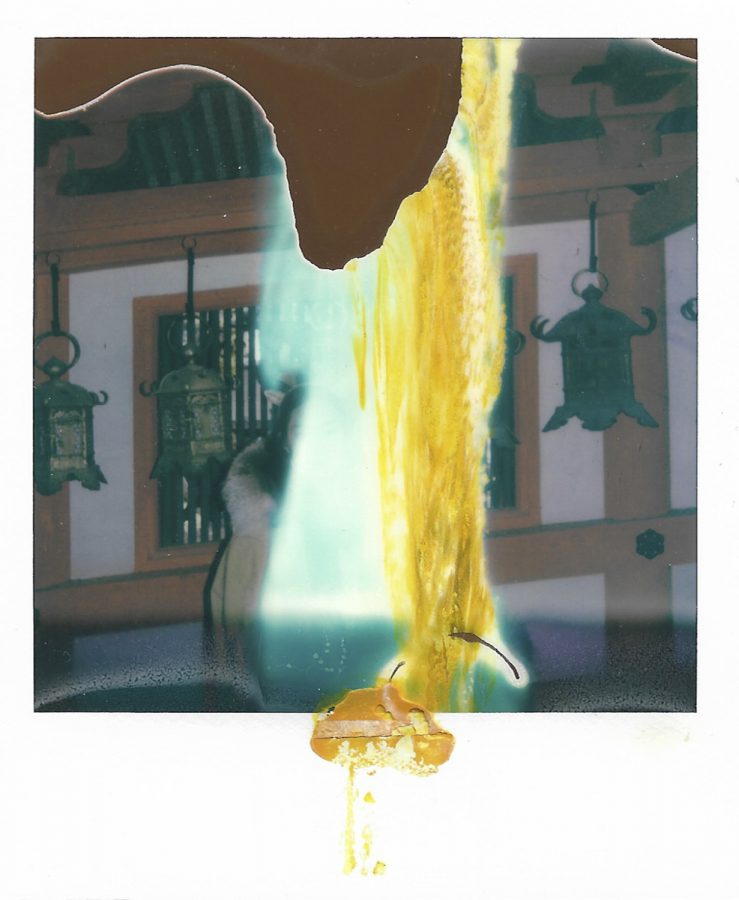Grandma inspires exhibit
Artist portrays cultural experience, raises questions about memory
Cheskhun’s exhibit,”The Ephemeral Nature of Memory,” uses polaroid photographs to explore the idea of memories.
October 22, 2020
Chadchom Cheskhun was inspired to make his thesis project for WSU’s Master of Fine Arts program after thinking about his childhood and his grandmother, realizing he couldn’t recall her face.
That inspired Cheskhun to think about the nature of memory and eventually create the project, which was a series of Polaroid photographs in three stages. When he took the photos, he used the chemical pouch in the Polaroid camera to distort the photos.
“I leave a little bit of hint to the audience and let the audience experience it,” Cheskhun said. “So I have my own experience, and when the audience comes to see it they probably have their own experience in that way too … so it’s like half and half between my memory and the viewer’s memory.”
Cheskhun has been practicing photography since he was 16. Born in Thailand to an artistic family, he said his father also did photography and was the one who encouraged him to pick it up. While he primarily does photography, Cheskhun also worked in sculpture, film and documentaries. He worked as an artistic director for a music label in Thailand for two years then lived in New York before enrolling in the MFA program.

Dennis DeHart was one of his professors. He said Cheskhun brought an interesting perspective with his cultural experience, his use of Polaroid photography and how he incorporated memory into much of his work.
“A lot of his work has to do with memory and I think cross-cultural memory,” DeHart said. “One of the things that really interested me with him was if memory is the same across cultures. Do we think the same way, do we remember the same way.”
Squeak Meisel, chair of the fine arts department, said he was impressed with Cheskhun ever since he saw his portfolio when he applied to the program.
“He grew a lot, and he explored — in a very open way — how to use his camera as an instrument to make things,” Meisel said. “Almost immediately, he was dismantling Polaroid cameras that had malfunctioned, adjusting the chemistry of the film and making strange, ghostly-like images.”
Meisel said he still has one of Cheskhun’s photos in his office – a picture Cheskhun took while in a snowstorm.
“He went out to look at snow, because he’d never lived somewhere with snow, and walked out into these Palouse hills and got lost … and so he’s trying to get back to his car in the dark, in a snowstorm, and he’s taking these photographs … and that flash made it like the background in Star Wars when they go Mach speed,” Meisel said. “They were really fascinating because they were really connected to his exploration and, I thought, became quite lovely.”
Cheskhun is currently in Bangkok and working to open up an art gallery. He said there aren’t as many opportunities for new artists in Thailand, and he wants to use the gallery as a way to give back to his community, support new artists, as well as make more space to display art.
“A lot of times, the camera can be a barrier between things because you’re capturing a photo as opposed to making something with your fingers,” Meisel said. “He was good at putting the expressive quality of a maker into a photograph.”






















